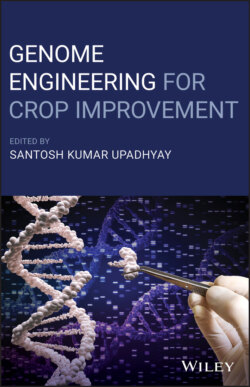Читать книгу Genome Engineering for Crop Improvement - Группа авторов - Страница 16
1.1 Introduction
ОглавлениеAgricultural practices, combined with advanced plant breeding and modern technologies, provided food security to millions of people. However, increasing global population demands significant increase in world food production (Parry and Hawkesford 2012). Nevertheless, climate change, depletion of natural resources, increased pollution, and political instabilities are a threat to the food and nutritional security for future generations in the twenty‐first century. Unfortunately, the amount of remaining arable land is limited, necessitating an increase in food production on currently‐used land. Compounding these challenges are the predicted crop losses due to extreme temperatures, pest attacks, and pathogen outbreaks. A powerful approach that may help overcome these challenges is to modify DNA sequences within plant chromosomes for trait improvement (Sedeek et al. 2019). Further, plants can be engineered to have increased tolerance to environmental stresses and pathogens (Han and Kim 2019; Ji et al. 2015; Makarova et al. 2011). In addition to improving the genetic makeup of the crops to meet increasing food demands and control crop loss, genome engineering can also be used to produce valuable plants or products for non‐agricultural purposes (Chen et al. 2019). For example, there is great potential for plants to be used as bioreactors for pharmaceutical proteins. Genetic engineering for increasing the secondary metabolite production in plants would be another use of this technology which would help the perfumery, cosmetic and medical industries, as the secondary metabolites produced from plants have a number of uses (El‐Mounadi et al. 2020). However, to realize the potential benefits of these applications, we must generate effective tools and approaches for editing plant DNA (Miroshnichenko et al. 2019; Tang and Tang 2017).
Introduction of programmed sequence‐specific nucleases (SSNs) and their applications in precise genome editing unfurled a new dimension in genome engineering (Kim and Kim 2014; Voytas 2013). Over the last few decades, researchers reported a few important SSNs, which could be easily engineered and reprogrammed to create double‐stranded breaks (DSBs) at the desired location inside the chromosome. There are three major genome engineering methods, ZFNs, TALENs, and CRISPR‐Cas system (Figure 1.1A) (Jang and Joung 2019; Mahfouz et al. 2014), that have been utilized so far for a variety of purposes, and these have been discussed in detail in the coming sections. Further, we have also described the recently added CRISPR‐Cpf1 system of genome engineering.
